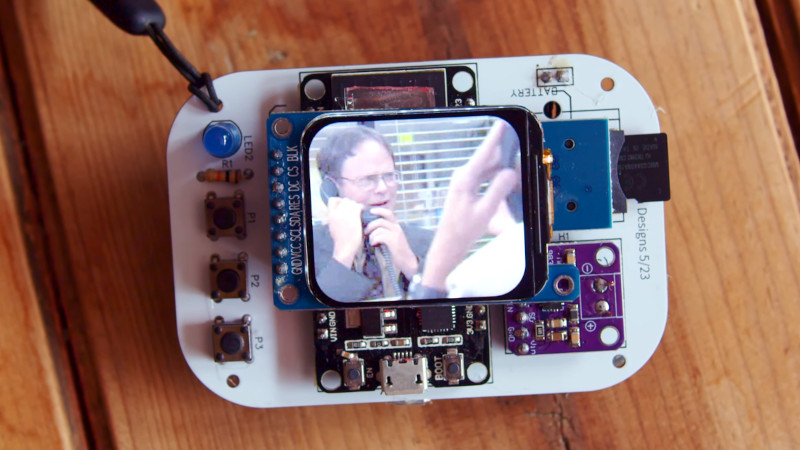When miniature LCD TVs arrived on the market they were an object of desire, far from the reach of tech-obsessed youngsters. Now in the age of smartphones they’re a historical curiosity, but with the onward march of technology you can have one for not a lot. [Taylor Galbraith] shows us how, with an ESP32 and an LCD we rather like because of its CRT-like rounded corners.
What he’s created is essentially a small media player, but perhaps what makes it of further interest is its migration from a mess of wires on a breadboard to a rather nice PCB. He’s not released the board files at the time of writing, but since the software can all be found in the GitHub repository linked above, we live in hope. On it are not only the ESP and the screen, but also a battery management board, an audio amplifier, and a small speaker. For now it’s a bare board, but we hope he’ll complete it with a neatly designed case for either a pocket player or a retro-styled mini TV. Until then you can see his progress in the videos below the break.
If you’re after more ESP32 media player inspiration, this isn’t the first retro-themed media player we’ve brought you.

















I’m not sure, Isn’t this called a video player? he talks about encoding using ffmpeg, so no live streams are shown.
I have used ffmpeg in realtime, it is a bit of a PITA but it works for a proof of concept or a simple application
Opportunities to learn
1. How to interface with an SD card
2. How to interface with an LCD
3. How to interface with a DAC
4. How video formats work
5. How file systems work
All squandered in favour the convenience of arduino.
No, I don’t think all projects must be useful but if you’re doing it for fun, why even compromise on the learning factor?
So I am to assume that you write *all* your “libraries” yourself in the name of learning opportunities and you do not borrow/use code somebody else wrote at all?
If someone posts code, use it.
*If someone posts code, learn from it and adapt it
You don’t have the slightest idea what this person learned when they were doing this project. It is very likely they learned a lot and enjoyed the experience. Just learning the fact that one can build something like this (for the first time) is an incredible experience. Don’t be arrogant, be nice.
Opportunities to learn
0. Learn about the basics first (Ohm’s law, principles of semiconductors, issues of ESD, how to solder)
Jesus, you’re an asshole. Unsubscribe.
typical_hackaday_reply_about_how_much_a_cool_thing_sucks(95).webm.png.jpg
Doing THOSE things for the 99999Th time isn’t fun for most people. Since they want something actually usable … and may have limited time to tinker so here we are.
If you’re compiling the audio and video separately, how do you guarantee sync?
I keep seeing these “board that holds other boards” projects, and while I love that they’re so cheap to make (I don’t think you can spin your own raw ESP32 cheaper than just buying the module above), they really leave a lot of miniaturization on the table.
I have half a mind to try to reduce this whole thing to fit behind the screen glass itself, ditch _all_ the carrier boards. It _could_be the size of a wristwatch, therefore it _should_ be, goes the thinking.
miniaturizing can be expensive! big bulky prototypes have that accessible, DIY feel that an inscrutably dense iPhone motherboard simply doesn’t. it’s somewhere in the vicinity of steampunk.